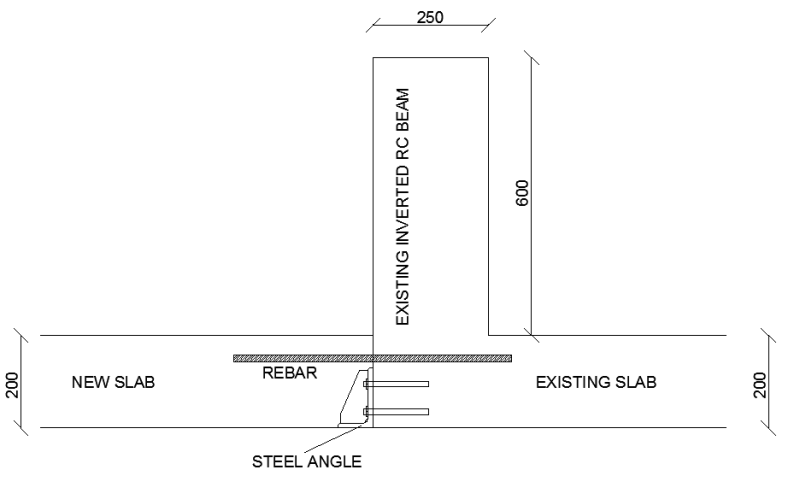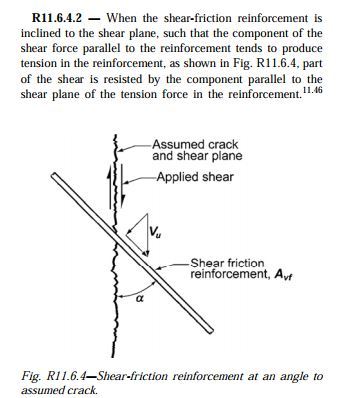Ytyus said:
Hi kookt, sorry for the late answer. I'm dealing with a deadline so i haven't much time for reading the post.
No worries. If you're a structural engineer and you're not up against a tough deadline, you're probably unemployed.
Ytyus said:
Maybe you are thinking in a trussed action between vertical shear and two relative sloped tension dowels
I'm thinking of a number of things but, primarily, just the ACI provisions for inclined shear reinforcement as shown below. They deal with this just as I've proposed with the additional requirement of the bar being developed for fy each side of the joint. They assume the dowel to be wholly in tension and not at all in shear.
You've made some interesting points but, all said and done, I think that you can simplify your thinking down to this:
1) For vertical slip to occur at the joint, movement has to take place across the dowel.
2) The dowel could resist the slip via tension.
3) The dowel could resist the slip via shear.
4) Since #3 involves dowel flexure, #2 will be the stiffer load path by a considerable margin.
5) It's reasonable to assume that dowel tension resists all the load.
Ytyus said:
but if we expect some moment at the joint the lower side of the slab will have a compression zone around the left side of the dowel, in that case probably tension is not being developed
Sure, but then your dowel not seeing any tension is really your best case scenario because it means that your flexural compression block is developing so much compression that you can just rely on classic shear friction rather than the dowels. And in our hearts, that's really what we all suspect was meant to happen anyhow so the diagonals just become a belt and suspenders load path.
This is your project, not mine. I respect any engineer's right to reject a solution that they simply don't "feel". That said, my solution is based on well established theory and I, personally, stand by it without reservation.
I like to debate structural engineering theory -- a lot. If I challenge you on something, know that I'm doing so because I respect your opinion enough to either change it or adopt it.




